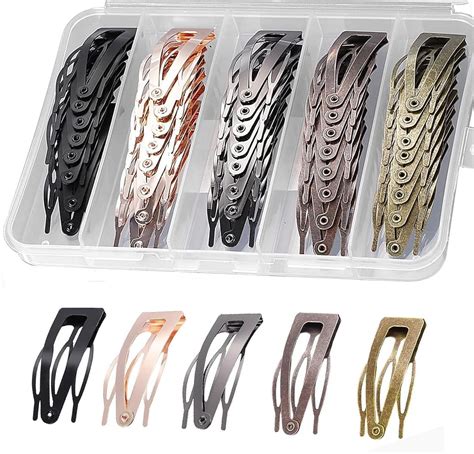Thin hair clips have emerged as a must-have styling tool for those struggling with fine or thin hair. These versatile accessories offer a discreet yet effective solution for adding volume, texture, and style to lackluster locks. Whether you’re looking to create sleek updos, voluminous ponytails, or intricate braids, thin hair clips can help you achieve the perfect look.

What Are Thin Hair Clips?
Thin hair clips, also known as bobby pins or hair pins, are small, flat clips made from metal or plastic. They are typically sold in packs of dozens or hundreds and come in a variety of sizes, colors, and styles.
Types of Thin Hair Clips
There are numerous types of thin hair clips available, each designed for a specific purpose:
-
Bobby pins: These are the most common type of thin hair clip and are ideal for securing stray hairs, pinning up bangs, or creating intricate hairstyles.
-
Flat clips: Flat clips are similar to bobby pins, but they are wider and flatter, making them ideal for holding back large sections of hair or creating volume at the roots.
-
U-pins: U-pins resemble the letter “U” and are used for securing rolls or chignons.
-
Snap clips: Snap clips feature a hinged design that allows for easy opening and closing, making them a convenient option for securing half-up hairstyles or braids.
Benefits of Using Thin Hair Clips
Thin hair clips offer numerous benefits for those with fine or thin hair:
-
Add volume: Thin hair clips can be inserted into the hair at the roots to create the illusion of volume and fullness.
-
Secure hairstyles: They can be used to hold updos, ponytails, and braids securely, preventing them from slipping or falling out.
-
Control flyaways: Thin hair clips can be used to tame flyaways and create a polished look.
-
Create intricate styles: With creativity and skill, thin hair clips can be used to create intricate hairstyles, such as updos and braids.
How to Use Thin Hair Clips Effectively
To effectively use thin hair clips, follow these tips:
-
Use the right size: Choose clips that are the appropriate size for the section of hair you are working with.
-
Insert at the roots: For maximum volume, insert the clips as close to the roots as possible.
-
Use multiple clips: Use multiple clips, evenly spaced, to create a more secure hold and prevent hair from slipping out.
-
Experiment with placement: Experiment with different clip placements to create different styles and effects.
Tips and Tricks for Using Thin Hair Clips
Here are some additional tips and tricks for using thin hair clips:
-
Use hairspray: Hold the clips in place by applying a small amount of hairspray to the hair before inserting them.
-
Conceal clips with hair: For a more discreet look, use clips that match your hair color and tuck them under the hair.
-
Create faux bangs: Clip in a few bobby pins to create the illusion of bangs.
-
Add texture: Use a few clips to create waves or curls in fine hair.
-
Secure accessories: Use bobby pins to secure hair accessories, such as headbands or hairpins, in place.
Tables for Thin Hair Clips
| Type of Clip | Use |
|---|---|
| Bobby pin | Securing stray hairs, pinning up bangs, creating intricate hairstyles |
| Flat clip | Holding back large sections of hair, creating volume at the roots |
| U-pin | Securing rolls or chignons |
| Snap clip | Securing half-up hairstyles or braids |
| Benefits of Thin Hair Clips |
|—|—|
| Add volume | Secure hairstyles | Control flyaways | Create intricate styles |
| Tips for Using Thin Hair Clips |
|—|—|
| Use the right size | Insert at the roots | Use multiple clips | Experiment with placement |
| Creative Applications for Thin Hair Clips |
|—|—|
| Faux bangs | Hair texture | Accessory security | Hair extensions |
Conclusion
Thin hair clips are an essential tool for anyone with fine or thin hair looking to add volume, style, and control. By following the tips and tricks outlined above, you can maximize the effectiveness of these versatile accessories and create stunning hairstyles with ease.
